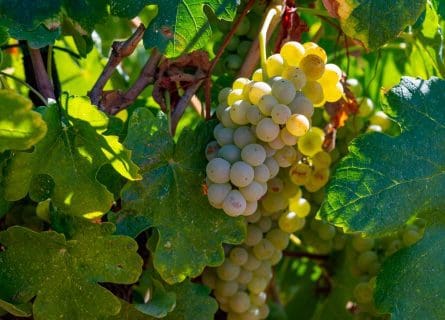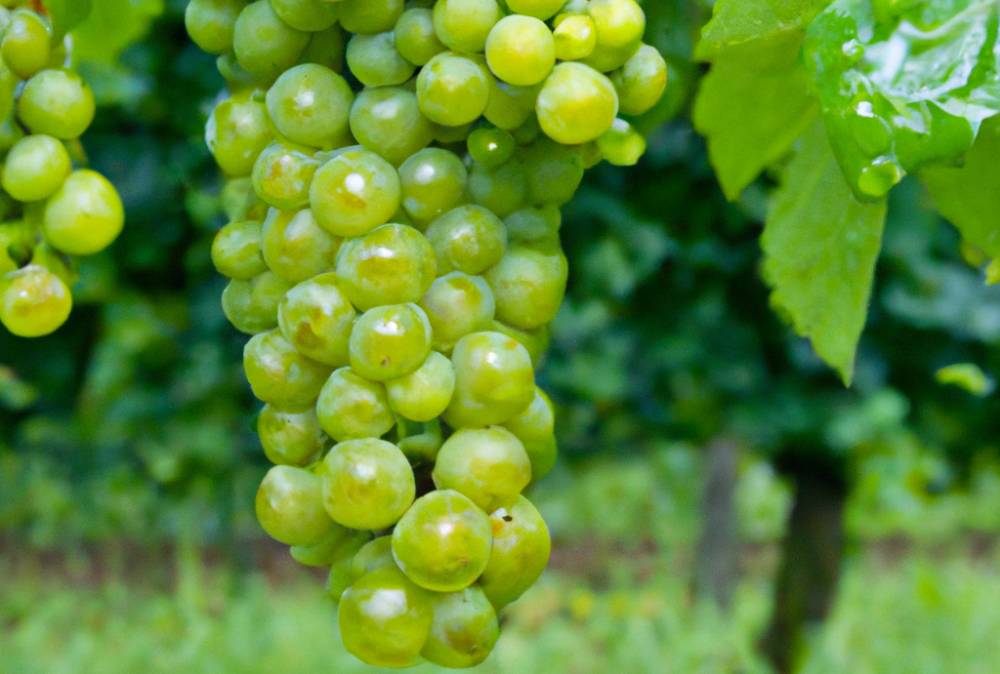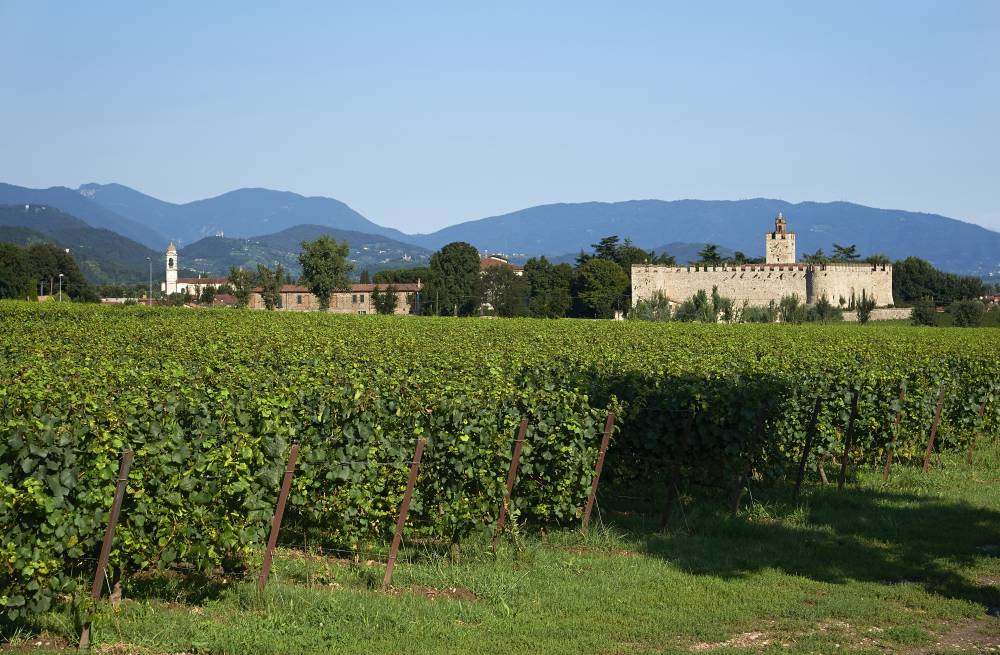
Roussanne Grape Variety: Collectability Credentials
October 4, 2022
Learn about Roussanne, the elegant white grape native to Rhône. Often blended with Marsanne, explore its unique qualities and rich heritage in our guide.
By: James lawrence / Last updated: February 3, 2025
Pinot Bianco (Pinot Blanc to the French) is the most misunderstood grape variety cultivated in Italy today. A lighter-skinned mutation of Pinot Noir, the grape was historically confused with its cousin Chardonnay in the vineyards of Italy, particularly in the hills of Alto Adige. But even when growers recognized the variety as Pinot Bianco, it was seldom treated with respect. At best, winemakers would produce every day, inoffensive white wine for early consumption. Blandness was its trademark.

Guide to Italian White Wine: Read more
Yet Pinot Bianco has the potential to be so much more. After an inauspicious beginning, Italian winegrowers have (finally) started to test the limits of the grape, producing a range of styles – sweet and dry – in several regions across northern Italy. Whether Pinot Bianco can truly rival the brilliance of Chardonnay is a subject of fierce debate. But the finest dry whites of Alto Adige deserve a lot more recognition.
Pinot Bianco is one of wine’s great travelers. You’ll find the grape in many regions and nations, including Alsace, northern Italy, Austria, Germany, and Burgundy. Parts of the US and Canada have also adopted it with relish, although high-quality examples are relatively rare there. Today, its Italian stronghold remains the mountainous vineyards of Alto Adige; ancient Greek settlers introduced wine growing to several European countries in the 8th century BC. Willingly adopted by farmers across northern Italy, the Roman conquest of Alto Adige in 15 BC did not dampen local enthusiasm for the grape.
On the contrary, wine became vital to Roman social and cultural life. However, the Western Roman Empire disintegrated in 476 AD, paving the way for the Dark Ages. Numerous civilizations fought for control of the region, leading to Alto Adige’s eventual division among Lombard, Alemanni, and Bavarian leaders. Nonetheless, viticulture remained at the center of agricultural life in Italy despite the political upheaval of the post-Roman era.
However, Pinot Bianco is a relatively late arrival to the vineyards of northeastern Italy. The grape is not believed to be indigenous to Alto Adige; historians say it is native to the hills of Burgundy. Once prolific across much of the Cote d’Or – and indeed Champagne – Pinot Bianco is now limited to a few parcels here and there. In the case of the Cote d’Or, this is largely due to the edicts issued by the Dukes of Burgundy; this powerful group of families assumed control of the region in the 11th century. They ordered growers to grub up Pinot Blanc and replace it with Chardonnay and/or Pinot Noir.
Many centuries later, the Champenoise decided to replace the variety en masse in the 1800s. Therefore, it is difficult to say precisely when Pinot Bianco was first cultivated on Italian soil. Nevertheless, the grape has remained a vital part of the winegrowing industries in Alto Adige and Franciacorta despite the political and economic turbulence of the last 1000 years.
In the 9th century, Trentino-Alto Adige became part of the Holy Roman Empire. This broad political structure encompassed territories in Germany, France, and Italy – it survived until the Napoleonic Wars of the early 1800s. After that, however, the religious establishment gained jurisdiction over Alto Adige, turning it into an ecclesiastical province known as the Bishopric of Trent. Nevertheless, competing interests saw part of the region handed over to the Habsburg dynasty in the mid-14th century.
However, it was not until 1805 that the entire province fell under Bavarian control following the battle of Austerlitz. After that, people knew Alto Adige as the Südtirol, and it remained outside of Italian jurisdiction until 1918, following the armistice signed at the end of World War 1. This accounts for the distinctly multicultural atmosphere that defines Trentino-Alto Adige today. Indeed, German is a more common language in south Tyrol than Italian: French, German, and Italian grape varieties are all found in the zone. However, perhaps the most captivating thing about the local wine industry is its diversity. One minute, you’re enjoying a glass of the esoteric Lagrein; the next, you’re drinking an oak-aged Sauvignon Blanc from the Valle Venosta.
Pinot Bianco is an important part of this story. In addition to its role in Franciacorta, the grape is responsible for some of northeast Italy’s finest dry whites: perfumed, structured, and complex. Moreover, it is also relatively straightforward to grow. An early-ripening variety, Pinot Bianco will usually deliver a good yield – occasionally excessive – unless the vintage is challenging. However, it can produce high-quality wine even if the yield approaches 60 hectoliters per hectare. Only a greatly inflated crop will result in disappointing wine. There is also the considerable risk of fungal diseases in wet weather: Pinot Bianco grows very densely packed bunches, hindering air circulation. Spraying the vines with a copper sulfate mixture may be unavoidable if this scenario occurs. Nevertheless, most growers now limit the use of synthetic fungicides as much as possible.
Winegrowers in northern Italy are experts at handling Pinot Bianco, which is used to add structure and weight to sparkling Franciacorta. At the same time, producers in Alto Adige have become adept at crafting superlative dry white wines from Pinot Bianco—every bit the equal of Chardonnay. The variety is also suitable for making excellent dessert wines—Austria’s Trockenbeerenauslesen can rival the best of Sauternes. However, winemakers ferment the overwhelming majority of Italian expressions dry.

In Franciacorta, Pinot Bianco plays the (vital) role of supporting act. Winemakers usually incorporate a small percentage into the final cuvée before it undergoes secondary fermentation in the bottle. They typically vinify base wines in stainless steel after gently pressing the grapes. Under the regulations, they must age NV Franciacorta for a minimum period of 18 months on the fine lees before disgorgement. However, certain Saten (Blanc de Blancs) wines can contain up to 50% Pinot Bianco – Chardonnay is always the other 50 percent. This stringent process is one of the reasons why Franciacorta is such a consistent sparkling wine. It is an appellation defined by quality.
Meanwhile, the production of still-white wines can vary significantly. In one approach, prioritizing fruit and aromatics overweight and power, winemakers gently crush berries, dose them with sulfur to prevent oxidation, and transfer them to a settling tank. They then chill the must to allow the solid matter to sink to the bottom of the vessel. Cool fermentation in stainless steel will then occur – low temperatures help preserve fruit and freshness in all-white wines. Winemakers may then mature the wine on its fine lees for several months to add richness and texture, followed by fining, sterile filtering, and bottling.
In most cases, these fruit-driven expressions of Pinot Bianco are on the market within 12 months of the harvest. They offer clean, ripe fruit and good acidity. But complexity and structure can be lacking.
Yet Pinot Bianco is more than capable of offering all of the above. Like Chardonnay, it is a very malleable and flexible grape, used to make a range of dry styles. If the winemaker desires weight and structure, they will vinify the wines in barrels – with concrete and amphorae also being popular choices – and allow them to oxidize gently for up to 30 months post-fermentation. The result is a full-bodied interpretation of Pinot Bianco, with aromas of wood smoke, butter, hazelnut, and almond. It is one of Italy’s most voluptuous white wines.
Mono-varietal and blends are two principal sources of delicious Pinot Bianco wines in northern Italy. The first is slowly gaining recognition for the stupendous quality of its bubbly. Although Italy boasts over 100 designations legally marketing sparkling wine, Franciacorta is the only appellation exclusively dedicated to fizz. The vineyards, located east of Milan in an undulating region called Brescia, offer breathtaking picturesqueness. Vines, sheltered by a chain of hills used for viticulture since Roman times, thrive in this area. The climate is continental, with bright sunny days, cool nights (exacerbated by the high altitude), and cold winters.
Pinot Bianco yields fantastic base wine in these Alpine conditions: fragrant, fresh, and rich in flavor. It has also developed a powerful synergy with the zone’s sandy soils – the terroir is both free-draining and rich in minerals from the glacial deposits. Although Chardonnay- and Pinot Noir-dominant blends tend to receive the most adulation from critics, Pinot Bianco is an invaluable part of the Franciacorta industry today. Admittedly, the area under vine is negligible compared to Champagne – about a tenth of the size – but in terms of quality, they are close rivals.
The second is, of course, Alto Adige. Again, all the cards are in order: the region’s vineyards bask in fresh Alpine air, enjoying many hours of uninterrupted summer sun. Meanwhile, the high elevation and mineral-rich soils help growers craft structured, elegant wines that speak of their origins. People have long regarded the eastern Adige slopes around the town of San Michele as the zone’s seminal terroir due to the abundance of colluvial matter (rock sediment transported to the lower mountain slopes) and vine-nourishing minerals. Some of Italy’s finest Pinot Bianco comes from here. Aging in clay amphorae has brought a new dimension to the grape, capturing the attention of hipster sommeliers abroad. As the gatekeepers to restaurant success and consumer notoriety, this has become vital to the region’s marketing. Once maligned for its ubiquitous, bland output, Alto Adige is now making waves.
If you would like us to customize an exclusive luxury tour, contact us and let us know your travel plans. We offer luxury food and wine tours for private groups of a minimum two guests. In addition, all of our private, chauffeured tours are available year-round upon request.

